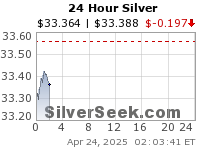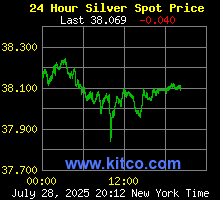What *really* is inflation, anyway? Why does inflation happen? How can I protect against inflation? If inflation hits me, what will it do to me? These are all questions that each and every one of us MUST ask ourselves today. With the ruthless banking practices that are commonplace, the use of our US dollar that it now fully fiat money, and a centralized bank, we are in a position of dire peril when it comes to our financial future and personal wealth.
So, what is inflation, really? The symptom of inflation is rising prices. This is simple enough, and we can all see it happening, so there’s not too much mystery about it. As time passes, the cost of things goes up. For example, many years ago a loaf of bread cost a nickel. Today it costs three dollars or so. Gasoline prices rise, along with housing prices, automobile prices, utility prices, food prices, and everything else. This slow upward creep of prices is the symptom of inflation. It seems to happen as a natural process, all by itself, and we are all accepting of it and don’t give it too much thought. But we should be giving it thought, because we need to understand that it is not just the natural order of things; it is an intentional and insidious, and it is a theft being perpetrated against all Americans by a ruthless banking cartel. You need to protect against inflation, and the explanation of why will follow.
Why does inflation happen? A common myth is that inflation happens because of greediness on the part of merchants. The myth holds that when a greedy merchant raises prices, then all other prices must go up to compensate for the higher inflated prices that merchant. In other words, everyone must charge more for what they sell (their goods or their labor) so that they are able to pay the inflated prices of the greedy merchants. But this process is a myth!
The real cause of inflation is not greedy merchants or greedy citizens. The law of supply and demand in a free market will compensate for that rise in price automatically, without raising prices for everything (like inflation does). It does this naturally through increasing competition (more supply), or people learning to do without that greedy-priced item (reduced demand). In either case, the price returns to an acceptable amount on its own, or the greedy merchant goes out of business. To reiterate, the law of supply and demand makes it impossible for greedy merchants to cause inflation; it is simply impossible for inflation to happen this way.
The true root cause of inflation is an increase in the supply of printed money, without a matching increase in real goods and services. And this money must be fiat money, which is the type of money that the US uses, along with almost every other country in the world. Fiat money has no value in itself, it is usually just paper (the US dollar is cotton and linen, to be exact). Its value comes from people’s faith in it, and their trust in the government that backs it. And the law of supply and demand applies to this fiat money, just like any other item like bread or gasoline. The more of it there is, the less value it has. Think about that. The more money that is printed and put into circulation, the less value each dollar has. And the less each dollar is worth, the more dollars it takes to buy an item. This is the one and only cause of inflation.
The upside of this truth is that inflation is avoidable for those that know how. The process of inflation has turned $1.00 in 1913 into $0.04 today. And to the detriment and cost of ALL AMERICAN CITIZENS. But this degrade in value is only for the fiat money. Precious metals like silver and gold have held their value through it all. So, to protect against inflation, you need to have some real money, the type of money that has intrinsic value, and can’t be “inflated” thereby losing value. Real money is made from precious metals like silver and gold.
When it comes down to the bare truth of things, we all must use the same money that everyone else uses, there is little we can do to avoid it. It is the common means of exchange that we all agree upon, so without it, we can’t easily buy what we need. Therefore we are essentially forced to use the intrinsically worthless fiat money. And as long as we hold a fiat dollar in our hand or bank account, it slowly decays in value due to inflation. Some experts call it the “hidden tax”. But you can protect against inflation and largely save yourself from this hidden tax…
Protect against inflation buy owning silver. (Owning gold also works, but silver is preferred for various reasons.) When you own a precious metal like silver, it cannot be inflated! No one can print more silver out of thin air, it has to be mined. And the cost of mining an ounce of silver ends up to be just about what an ounce of silver is worth, in current dollars. And that fact makes it a very safe investment, in that it can’t lose value, even from that crazy inflation process.
Silver holds its value through time, and has been a medium of exchange and money for thousands of years for this reason. An ounce of silver today, converted to cash, will but the same amount of goods that an ounce of silver could buy 100 years ago. Try that with a paper dollar! You’d have to work a couple days to earn a paper dollar 100 years ago, and spending that same paper dollar today you’d get next to noting for those 2 days of work. However you can protect against inflation by using your own brain and initiative to learn and act, then to know that you must own real money: silver coins and bullion.
The US dollar is destined to lose even more value in the near future because more and more fiat money is being produces in an effort to avoid a collapse of some kind. You must protect against inflation by converting as much worthless paper money into real valuable money, preferably in the form of silver. Again, you must protect against inflation or you stand to lose all the dollars you have in savings!
When (not IF) the US dollar loses so much value that everyone loses faith in it, it could become “wheelbarrow money”. If that becomes the case then it will be so worthless that people will need a wheelbarrow to carry enough of it to buy daily necessities, like food. It has happened twice in the young United States, and it is likely to happen again. When you own silver or gold it will keep its value, and it will become the real money, the ONLY money, that people will accept when that takes place. And silver is preferable because the denominations of gold are too high for daily transactions, and using gold can cause you to overpay. Silver can be spent in more exact amounts, and it is just as save a store of value as gold.
The bottom line: convert the dollar to silver, this will protect against inflation.





